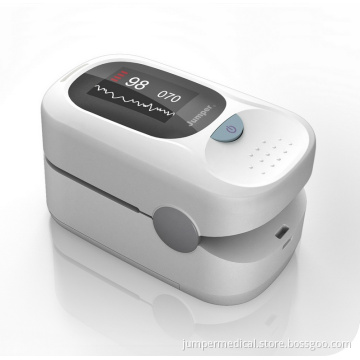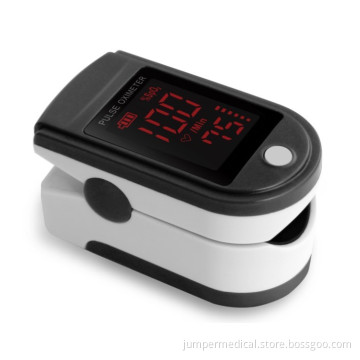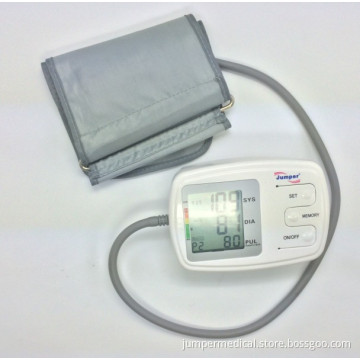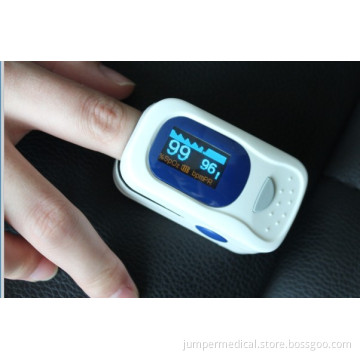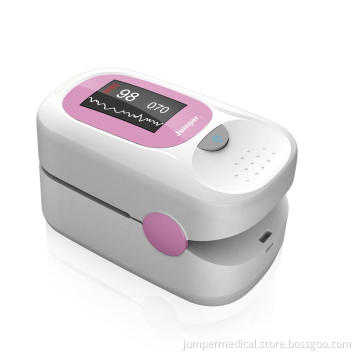
Fingertip Pulse Oximeter Jpd-500A with CE& FDA
- Payment Type:
- L/C, T/T, Paypal, Western Union
Quantity:
Your message must be between 20 to 2000 characters
Contact NowBasic Info
Basic Info
| Place of Origin: | Shenzhen China |
|---|---|
| Payment Type: | L/C, T/T, Paypal, Western Union |
Product Description
Product Description
Jumper Digital Fingertip Pulse oximeters JPD-500A, pink, blue and grey colors for choosing, CE&FDA marked.
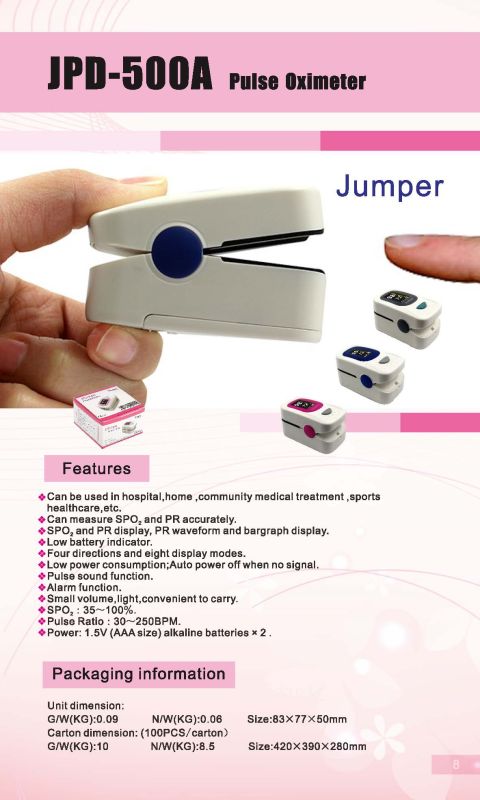
Feature:
1. Can be used in hospital, home, community medical treatment, sports healthcare, ect.
2. Can measure SpO2, PR accurately.
3. SpO2 and PR display, PR waveform and bargraph display
4. Battery voltage low indication.
5. Four directions and eight modes
6. Low power consumption; Shut off automatically when no signal
7. Pulse sound function
8. Alarm function
Use Method:
1. Install two AAA batteries into battery compartment correctly.
2. Place damp over finger nail as the following diagram.
3. Insert one finger into rubber hole of the Oximenter fully.
4. Press the switch once on the front panel
5. Finger and body should not tremble during measuring
6. Read correspondent date from display screen
Packing list:
- 1 x Pulse oximeter
- 2 x AAA Alkaline Batteries
- 1 x English user's manual
Free: Lanyard
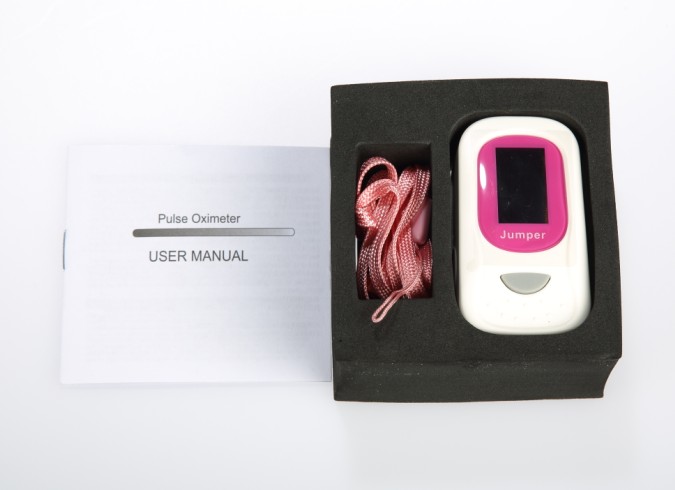
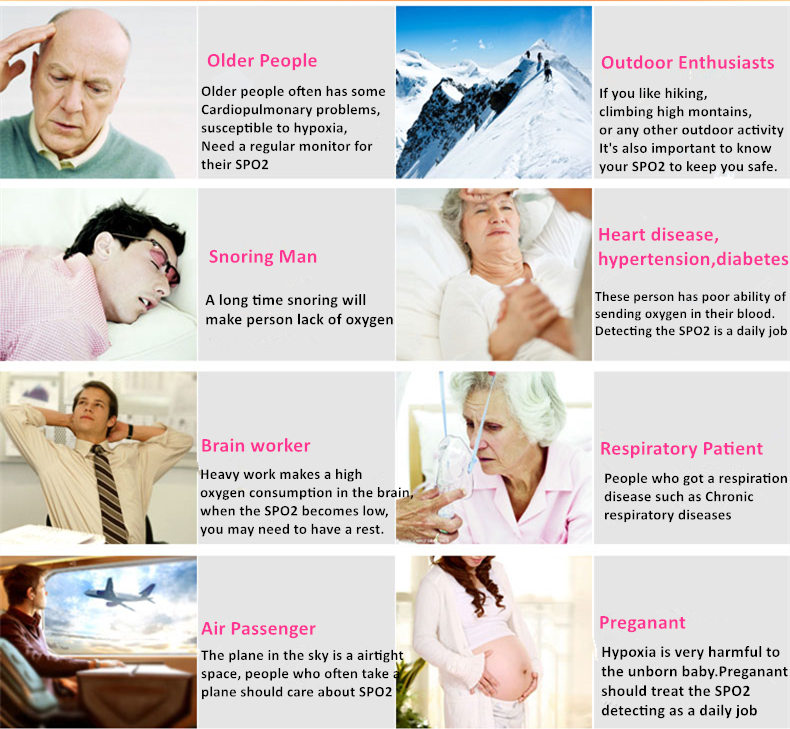

Feature:
1. Can be used in hospital, home, community medical treatment, sports healthcare, ect.
2. Can measure SpO2, PR accurately.
3. SpO2 and PR display, PR waveform and bargraph display
4. Battery voltage low indication.
5. Four directions and eight modes
6. Low power consumption; Shut off automatically when no signal
7. Pulse sound function
8. Alarm function
Use Method:
1. Install two AAA batteries into battery compartment correctly.
2. Place damp over finger nail as the following diagram.
3. Insert one finger into rubber hole of the Oximenter fully.
4. Press the switch once on the front panel
5. Finger and body should not tremble during measuring
6. Read correspondent date from display screen
Packing list:
- 1 x Pulse oximeter
- 2 x AAA Alkaline Batteries
- 1 x English user's manual
Free: Lanyard

Who need pulse oximeter?
Pulse oximeters are now used routinely in critical care, anaesthesiology, and A&E departments, and are often found in ambulances. They are an increasingly common part of a GP's kit. Pulse oximetry's role in primary care may include:
- Diagnosing and managing a severe exacerbation of chronic obstructive pulmonary disease (COPD) in the community.
- Grading the severity of an asthma attack. Where oxygen saturations are less than 92% in air, consider the attack potentially life-threatening.
- Assessing severity and oxygen requirements for patients with community-acquiredpneumonia.
- Assessing severity and determining management in infants with bronchiolitis.

Why is pulse oximetry so important?
-
Once a patient starts losing oxygen, a doctor has less than three minutes to prevent risk of brain damage, heart failure and death.
- A healthy body should never fall below 95% oxygen saturation, and oximeters can detect changes as small as 1%. Before oximeters were invented, experienced clinicians would only notice signs of hypoxia (oxygen starvation) when patients became cynaosed - literally their skin began turning blue, with oxygen saturation damagingly low at 85%.
- Introduced in 1985, pulse oximeters were rapidly adopted by anaesthesiologists as the universal standard of care in operating theatres, emergency, recovery and neonatal units and all wards (especially in paediatric wards). Oximeters are used in the treatment of pneumonia; they can be used to prevent neonatal blindness -they are a key component of the WHO Safe Surgery Checklist.
- In most high-income countries where pulse oximetry is universal across the perioperative process, anaesthesia has become very safe: rates of mortality directly attributable to anaesthesia are typically less than 1 in 50,000 procedures. In low income countries the rate is often at least ten times higher than this, and can be up to 1000 times higher.
- Upgraded to the highest level of recommendation in the updated 2010 International Standards for a Safe Practice of anaesthesia, developed and endorsed by the World Federation of Societies of Anaesthesiology, pulse oximetry is essentially mandatory - and dangerously scarce in low-resource countries.
Related Keywords
Related Keywords

